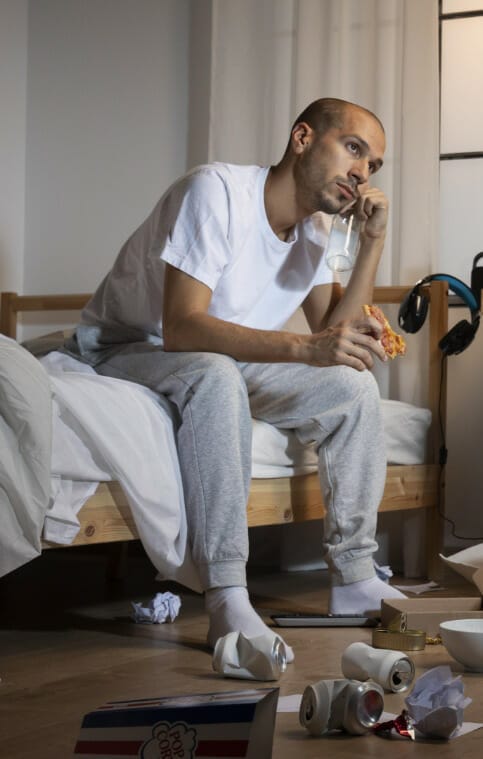They wanted to shed light on hoarding disorders and we wanted to help. That’s why we partnered with them in the beginning. You can see us on Season 11 Episode 1.
However, the show also heaped drama and shame on something that, honestly, is much more normal than we’d like to admit.
Having experienced firsthand how they treated their clientele and how unrealistic their depiction of hoarding was, we dropped out.
We wanted to end the stigma around hoarding and shed light on just how common it is.
Everybody knows someone who is impacted by it.

The Life-Changing Magic of Tidying Up
Author










Level 1
There is clutter, but no concern for safety
Level 2
The home is livable, but is in need of cleaning and may start to overwhelm residents
Level 3
Home shows extreme disorganization
Level 4
Home shows excessive clutter as well as extreme disorganization
Level 5
Homes are hazardous and require professional help
We have all fallen on this scale at some point in our lives and could quite possibly be there now, especially for households that have small children living at home.
The Institute for Challenging Disorganization (there’s a relatable title!) has classified hoarding behavior into five levels on their Clutter-Hoarding Scale.
All stairways, doors, and windows are accessible, not blocked by clutter.
The home has good ventilation and is free of bad odors.
The number of pets in the home is appropriate and compliant with zoning regulations.
Pet hair and waste is cleaned up and disposed of properly.
There are no visible pests like insects or rodents.
One important exit is blocked with clutter.
Pet waste and hair can be found in the home.
Electrical and/or plumbing issues are present.
There may be a major appliance that has been broken for more than one season.
Garbage containers are overflowing.
Some mild odors are present, related to overflowing dishes, laundry, uncleaned bathrooms, etc.
Occasional presence of household pests in the home are quickly dealt with.
Mild insect infestations are observed, potentially involving lice, cockroaches, ants, or bedbugs.
Piles of objects obstruct essential living areas.
Several appliances are broken and unusable.
Spills and dirt accumulate for days, impacting food preparation and eating areas.
Specific rooms are repurposed for storage, deviating from their intended function.
Unpleasant odors pervade the home, accompanied by scattered dirty laundry.
Structural damage is present, such as water damage, broken doors, and plumbing issues.
Excessive pets and pet waste may be present.
Clutter is blocking access to stairs, rooms, and exits.
Expired and rotting food is present in the home and contributes to odors.
Multiple rooms are cluttered to the extent that they cannot be used for their intended purposes.
A medium level of insect infestation is present.
Bats, squirrels, and/or rodents may be in attic or basement.
Sewage is backed up.
Extreme indoor clutter makes important living spaces unusable.
There is no ventilation in the home.
Structural damage is irreparable.
Water and/or electrical services have been disconnected.
Mold and/or mildew is pervasive throughout the home.
Pets living in the home are at risk due to living conditions.
Occupants of the home in danger due to pet behaviors, numbers, and/or health conditions.
Household appliances are unusable due to disrepair or being blocked by clutter.


























Level 3 Households Should Consider Hiring Outside Help.
Although, it’s still possible to get it under control with a concerted effort from the whole family.










Those Living In Level 4 Conditions Need Professional Help.
At this level, part of getting help includes professional cleaning to transform the house into a safe, hygienic space where people can thrive. Bio-One can help.









Level 5 Homes Are Alarmingly Hazardous.
They require professionals with safety equipment and training to clean.

